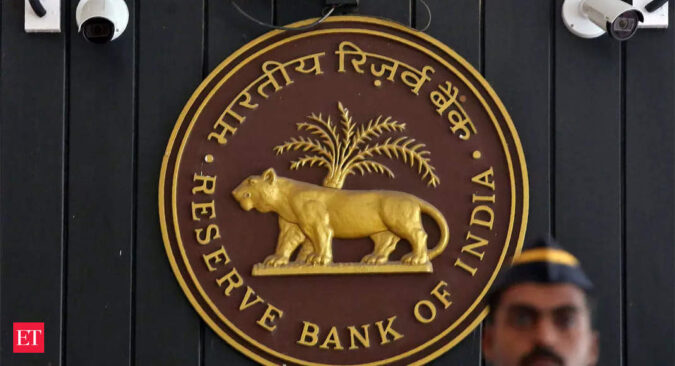Concerns over a material slowdown in the affordable housing loan market and the need for financial stability taking centre stage due to the banking crisis in the West are two factors that can force a pause, SBI Research says in its latest Ecowrap report. The RBI could pause rate hikes and the current 6.5 per cent repo rate could be the terminal rate for now, it says.
Tomorrow’s MPC meeting is the first in the current financial year. In FY23, the MPC had raised the repo rate by a cumulative 250 bps to 6.5 per cent. The latest inflation print, for February, stood at 6.44 per cent, breaching the upper limit of RBI’s tolerance band of 2-6 per cent for the second straight month.
Recent unseasonal rains and a shock production cut announced by OPEC+ might have changed the MPC calculations if it had been considering to pause rate hikes. The experts, many of whom had earlier expected a pause in rate hikes, now expect a 25-bps rate hike in April.
A prolonged pause coming?
According to an ET Poll, nine of 10 economists expect a 25 bps rate hike. They also expect the RBI to opt for a prolonged pause after April’s hike. A few respondents have anticipated no further hikes in the rest of FY24.
The Reuters Poll also had a similar outcome. It said the RBI would raise its main interest rate by 25 basis points and then pause for the rest of the year. Economists at Goldman Sachs expect the RBI to raise rates by 25 bps to take the repo rate to 6.75 per cent. “With considerable uncertainty around the commodity prices path and global growth, the RBI is likely to retain the tightening policy stance,” it said. IndusInd Bank chief economist Gaurav Kapur also expects a 25-bps increase but predicts a change in the RBI’s stance from withdrawal of accommodation to neutral.
“We could see a prolonged pause after that, with rates being data dependent, particularly with risks to inflation in terms of monsoon and also uncertainties about growth,” Kapur said. “But there is a good 80-basis point favourable base effect from March that will ease inflation.”
Economists from Barclays, Deutsche Bank, Care Ratings, Bank of Baroda, DBS, Kotak Mahindra Bank and Yes Bank expect a 25 bps increase on Thursday and a pause after that.
Why do so many experts expect a rate hike tomorrow?
Unseasonal rains and crop damage
The unseasonal rains and hailstorms in many parts of India recently have damaged crops, exposing thousands of farmers to losses and raising the risk of further food price inflation. India’s major chunk of wheat-producing areas including Punjab, Haryana, Uttar Pradesh and Madhya Pradesh, saw rains flattening crops in many parts.
The wheat crop looked promising until early March when the weather became unfavourably hot. “Now, rains and hail have flattened the crop. It’s a double whammy for us,” Ramandeep Singh Mann, a farmer in Punjab, told PTI. Some experts believe the unseasonal rains could just affect the quality of the crop instead of bringing down the output. Yet, the fears of a reduced output due to March heat and now rains stay.
The outlook is adverse for summers when weather experts expect abnormally high temperatures. Add to that the worries over El Nino disrupting the monsoon. The RBI is not likely to ignore the weather. It will remember how last year a heat wave had cut India’s wheat production, forcing a ban on wheat exports to calm local prices, which had already gone up due to Russia’s invasion of Ukraine.
The oil shock
Oil cartel OPEC+ announced a surprise output a few days ago, jolting policymakers. The looming impact reverberated across asset classes as it fuelled fears of further inflationary pressures.
The latest cut could lift oil prices by $10 per barrel, the head of investment firm Pickering Energy Partners told Reuters. Goldman Sachs has also lifted its forecast for Brent to $95 a barrel by the end of the year and to $100 for 2024.
This is increasingly worrying for India, because it buys around 85% of its crude oil from overseas markets which stretches its trade deficit and lifts the “imported” inflation. India’s rising purchases of discounted oil from Russia may not be a strong support against the possible risks.
Peer pressure
Since several other important central banks, especially the US Federal Reserve and the European Central Bank, have raised rates recently, the RBI might feel pressured to follow suit. But many have wondered for how long the RBI can match the US Fed stroke by stroke in rate hikes.
A US Fed rate hike widens the gap with the rate in India thus putting pressure on the rupee. That’s why the RBI is compelled to follow the US Fed hikes. But at some point of time the RBI must pause and think whether the impact of its earlier rate hikes has percolated down into the system, the SBI’s chief economic adviser Soumya Kanti Ghosh said recently.
